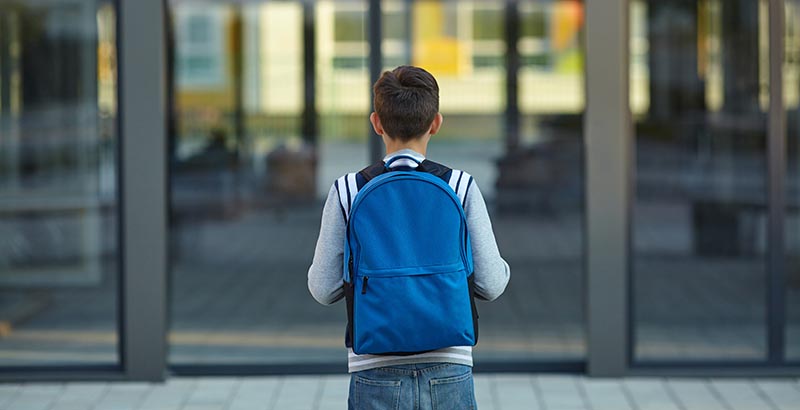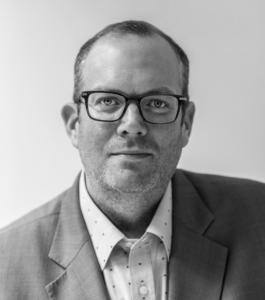New Ideas for a New Era of Public Education: 8 Ways We Can Change How Schools Are Organized, Funded, Measured and Led to Prepare Grads for the Age of Automation

In 1993, Paul T. Hill founded the Center on Reinventing Public Education, a research center based out of the University of Washington’s Daniel J. Evans School of Public Policy and Governance that from the outset was focused on issues of the next century and the broader question of how America’s schools can better prepare their graduates for a rapidly changing society.
This past winter, CRPE, now led by Robin J. Lake and based at UW Bothell, hosted a gathering of education experts and observers to commemorate its first quarter-century of work, toasting 25 years of research, analysis, field studies and white papers created in hopes of aiding school leaders, elected officials and families in reimagining our education system. And not just the function of our schools — but the ways in which the larger system is structured, governed and evaluated.
Across its first 25 years, CRPE’s pursuits were focused primarily on developing more highly effective public schools in every community, especially for low-income or otherwise disadvantaged students. One prominent strategy at the core of the center’s work has been the portfolio strategy, in which public schools operate with high levels of flexibility and family choice, paired with strong government oversight. But beyond the portfolio model, the center has also focused on key issues of funding formulas, governmental oversight, innovative practice and the charter school sector.
In a series of new essays and analyses published in coordination with its anniversary celebration, CRPE took the longer view, considering how these systems and structures must adapt over the next 25 years as education becomes more nimble and personalized, and as it becomes a priority for learning to extend beyond the traditional classroom structure.
It was an eye-opening and horizon-expanding thought experiment. And we’ve assembled a handful of these new essays — and their bold theses — below, in a bid to answer the underlying question: What does success look like in 2050 America, and how must our schools evolve to set graduates up for that success?
In honor of CRPE’s 25th anniversary, here are eight of the center’s biggest thoughts about the next era of public education — some not-so-modest proposals worth thinking about:

Reconfiguring the P-16 Pipeline — How do we redraw the high school–college career continuum? American public education assumes one common pathway for all: four years of high school and, for the lucky, another four years of higher education, the required credential for the vast majority of middle- and high-paying jobs. Even as careers grow ever more diverse, and students fall into a clear and concerning skill gap that will only get worse with continued automation, we remain almost singularly devoted to the “4+4” preparation model. Instead, the billions of dollars we devote each year to education would be better spent breaking down the traditional barriers among high school, college and career and reimagining the 9-16 continuum of learning so we can develop the talented workforce and democratic citizenry needed for our nation to thrive in the 21st century. Read the full proposal.

Redefining Equity — Beyond the classroom, how are we going to grapple with out-of-school enrichment, postsecondary preparation and beyond?: Expanding access to educational opportunity has defined debates over school reform for nearly a century, including desegregation efforts, finance equalization cases and proposals to expand school choice. But despite notable progress in some areas, opportunity is more stratified than ever along the lines of race and class. While the issues of racial and income-based segregation, inadequate spending and gaps in achievement continue to define educational inequality, they fail to capture broader societal shifts that are changing the ways we think about youth development. These include increased household spending on out-of-school learning experiences, particularly among wealthy families; the growing complexity of postsecondary educational opportunities; and the importance of non-achievement-based educational outcomes. These shifts highlight sources of educational inequality that, to date, policy has largely failed to address — and at times actively undermined — and suggest a new framework for our evolving conversation surrounding improving opportunity for America’s most vulnerable children. Read the full proposal.

Rejecting ‘Average’ — How we can redesign the school system for the tails, not the mean. The public education system must prepare all students to solve the problems of the future. But the current system is not rising to the challenge. While high school graduation rates are at an all-time high, completion and dropout statistics for students with disabilities remain dismal. (The latest federal education statistics show that fewer than two-thirds finished high school with a standard diploma.) Beyond students with disabilities, other student populations have unique needs that existing public school systems remain ill-equipped to meet. The struggles of these students, along with those of countless other “square pegs” — independent thinkers, nonconformists, students who are exceptionally creative — cry out for approaches that can better match talent with opportunity. Here’s a renewed call to design an education system for the tails, not the mean. Read the full analysis.

Rethinking the Classroom — Instead of a portfolio of schools, envisioning a portfolio of student opportunities: Conversations about the next generation of education reforms often get bogged down in either-or disputes. Should districts focus on improving their own schools or contracting with autonomous schools of choice? Can students gain access to job-related learning opportunities without having to sacrifice high school college prep coursework? Should states invest in expanding universal pre-K and other programs built to help lay students’ academic foundations, or should they focus on building K-12 schools capable of helping them achieve faster rates of academic growth? An agile public education system, Lake argues in this new essay tied to the 25th anniversary of the Center on Reinventing Public Education, would avoid pat answers to these questions and concentrate instead on providing effective, flexible and individual pathways toward common goals. It would find ways to enable every student to achieve gateway competencies. It would give students the support necessary to achieve their full potential and allow them to pursue personal objectives such as job and language skills, social-emotional development and achievements in science or the arts. Most importantly, if something was not working, or a student’s needs were not being met, an agile education system would be equipped to change. Looking beyond merely a portfolio of schools, a broader student-centered system would be animated by a drive to do whatever is necessary to prepare every student to solve the problems and capitalize on the opportunities that await the next generation. Read the full proposal.

Retraining Teachers — How personalization, specialization, soft skills and a talent shortage will reshape the profession: A rapidly changing future has implications not just for learners but also for educators. What might it mean for who teaches what — and how? In a new analysis, we consider the broader future of the teaching profession, from how instructors will be required to expand their expertise to how schools and districts will be forced to rethink issues of recruitment, development and collaboration. In particular, the paper identifies two areas of teacher expertise beyond academics that will become increasingly important and spotlights emerging ideas about how to challenge the one-teacher, one-classroom model while making the job more manageable. The authors also underscore the need to cast a wider net in engaging a broader community in the conversation about what quality teaching looks like for the next generation. “The future of teaching may be less about knowing the answer,” the authors write, “and more about rethinking who asks the questions and works to solve emerging problems.” Read the full thinkpiece.

Redistributing Funding — How routing dollars to students instead of schools could fund a more nimble system: In a more nimble public education system, all students would have equitable access to learning opportunities during the summer, outside the normal school day and beyond the school walls. Students would also continue to have access to these learning opportunities, supplemental support and postsecondary education opportunities later in life. And students from special populations — those who are gifted and low-income, those with disabilities, those who are not native English speakers or who lack stable home environments — would have access to educational programs tailored to their circumstances. One policy could help enable all of them: personalized education funding. Rather than states and local governments allocating funding to specific public schools, students themselves would receive funding based on their needs and circumstances, and could then plan with their parents to direct this money toward their educational needs: basic school attendance, tutoring, therapy or supplemental learning experiences. Read the full analysis.

Restructuring Education Systems — How can an innovative approach to school governance balance a need for experimentation with a parent’s right to make informed choices?: A local public education system built for personalization and rapid adjustment to workforce demands must be open to innovation and make full use of learning opportunities outside of conventional schools. But that system cannot be so atomized, chaotic or dominated by irresponsible providers that families are ultimately unable to make informed choices for their children. Families need a comprehensible set of options and information about likely results for students, and communities need options that prepare young people for jobs that are likely to exist. Still, this need for some degree of order and process must not drive out innovation and responsiveness to change. Students must be free to pursue — and providers free to offer — learning experiences that community leaders might not understand or prefer. Paul Hill takes the long view on how to balance these essential, conflicting needs. Read the full commentary.

Empowering Change — Why America’s educators are ready to innovate (but their education systems are not): Designed more than 100 years ago, America’s public education system is not preparing students for today’s realities of civic and global competitiveness — much less tomorrow’s. Consider the facts: U.S. students are scoring poorly in math and science compared with students in other industrialized countries, and they’re not graduating with the necessary skills or knowledge to succeed in college. Think about social mobility, and the situation grows even starker: Children from high-income families are 10 times as likely as other children to become inventors; NAEP fourth-grade achievements show that only 8.6 percent of students with disabilities scored proficient in reading; and rural students have less access to high-speed internet, AP coursework and extracurricular opportunities, leaving them more likely to “undermatch” themselves when applying to colleges. There is no single answer, but for every solution tried, there is one common theme: Educators, students and families who want something better are thwarted by an outdated delivery model. Robin Lake pens an in-depth analysis of the current educational system — and why she says it will not deliver in preparing students to solve the problems of an unpredictable future society. Read the full analysis.
Get stories like these delivered straight to your inbox. Sign up for The 74 Newsletter

;)
